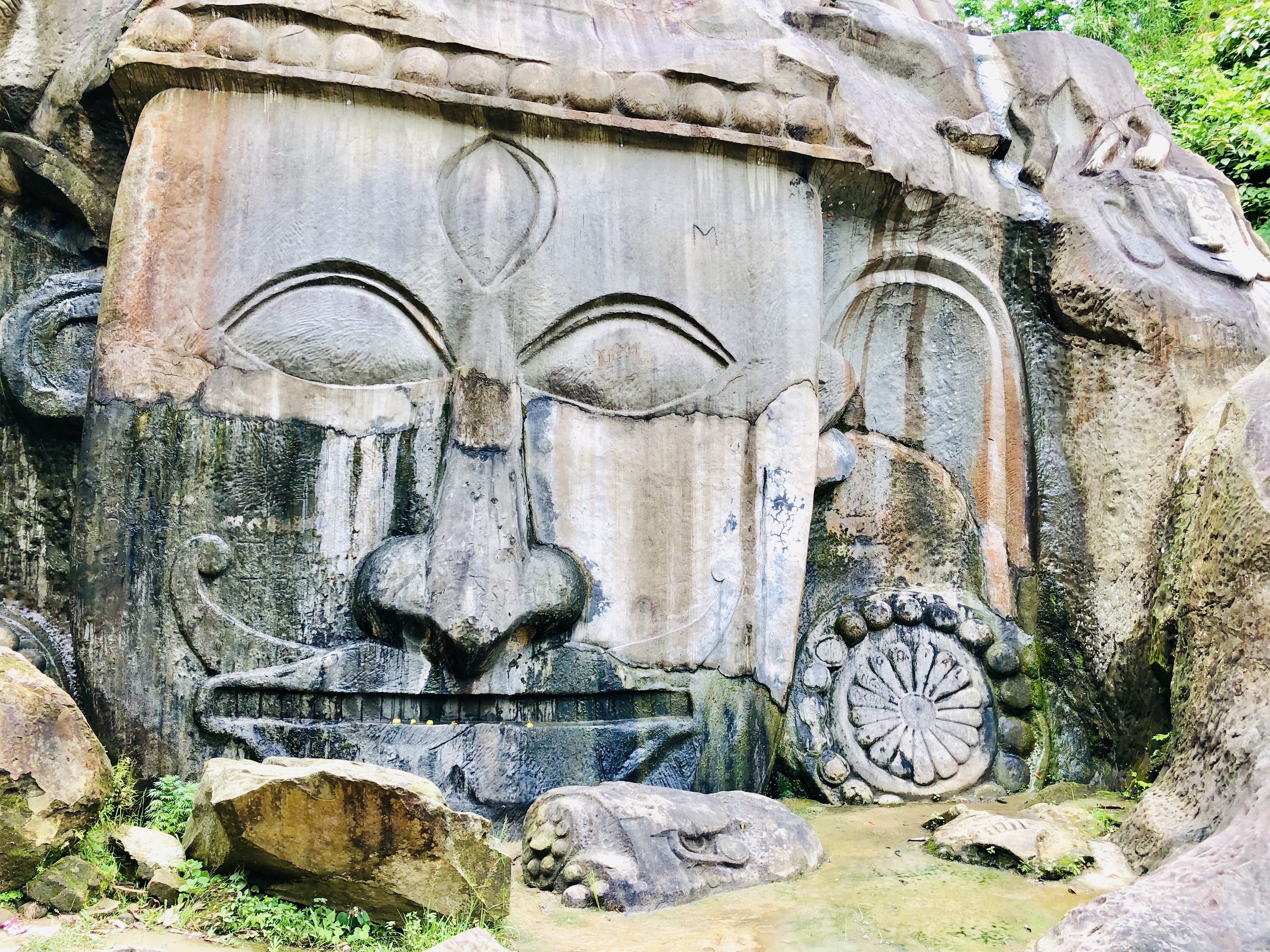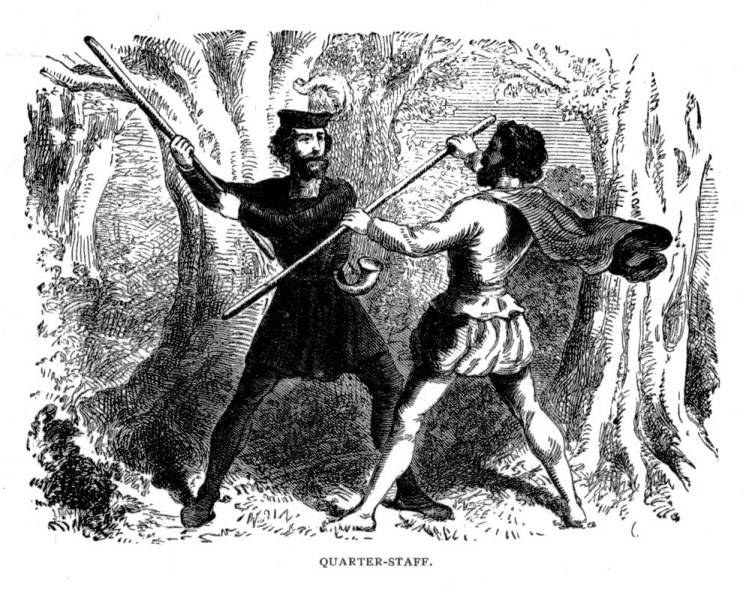|
Cheibi
Cheibi, also known as Cheibi Gad-Ga, is a classical Meitei traditional martial art form. It is originated from the Ancient Kangleipak (present day Manipur state). It is practised using sticks and shields. It is related to other martial art forms of Mukna, Huiyen Lallong, Sarit Sarak and Thang Ta. "Cheibi" itself is the name of the stick used in the martial art form. Equipments In ancient times, real swords and spears were allowed in the competition. Instead of using a sword and a leather shield, participants now use a stick wrapped in soft leather. The 'Cheibi' stick is typically around 2 to 2.5 feet in length, while the shield has a circumference of about 1 meter. Venues The competition happens in a circle that is 7 meters wide, set on a flat surface. Around the circle, there are two lines that are 2 meters apart from each other. Rules and regulations To decide who wins, points are earned during the duel. The points are given based on a combination of the partici ... [...More Info...] [...Related Items...] OR: [Wikipedia] [Google] [Baidu] |
Sikh
Sikhs (singular Sikh: or ; , ) are an ethnoreligious group who adhere to Sikhism, a religion that originated in the late 15th century in the Punjab region of the Indian subcontinent, based on the revelation of Guru Nanak. The term ''Sikh'' has its origin in the Sanskrit word ', meaning 'seeker', or . According to Article I of Chapter 1 of the Sikh ''Rehat Maryada'' (), the definition of Sikh is: Any human being who faithfully believes in One Immortal Being Ten Gurus, from Guru Nanak Sahib to Guru Gobind Singh Sahib The Guru Granth Sahib The utterances and teachings of the ten Gurus and The initiation, known as the Amrit Sanchar, bequeathed by the tenth Guru and who does not owe allegiance to any other religion, is a Sikh. Male Sikhs generally have '' Singh'' () as their last name, though not all Singhs are necessarily Sikhs; likewise, female Sikhs have '' Kaur'' () as their last name. These unique last names were given by the Gurus to allow Sikhs to stand out ... [...More Info...] [...Related Items...] OR: [Wikipedia] [Google] [Baidu] |
Martial Art
Martial arts are codified systems and traditions of combat practiced for a number of reasons such as self-defence; military and law enforcement applications; competition; physical, mental, and spiritual development; entertainment; and the preservation of a nation's intangible cultural heritage. The concept of martial arts was originally associated with East Asian tradition, but subsequently the term has been applied to practices that originated outside that region. Etymology "Martial arts" is a direct English translation of the Sino-Japanese word (, ). Literally, it refers to "武 martial" and "芸 arts". The term ''martial arts'' was popularized by mainstream popular culture during the 1960s to 1970s, notably by Hong Kong martial arts films (most famously those of Bruce Lee) during the so-called " chopsocky" wave of the early 1970s. According to John Clements, the term ''martial arts'' itself is derived from an older Latin term meaning "arts of Mars", the Roman god of w ... [...More Info...] [...Related Items...] OR: [Wikipedia] [Google] [Baidu] |
Tripura
Tripura () is a States and union territories of India, state in northeastern India. The List of states and union territories of India by area, third-smallest state in the country, it covers ; and the seventh-least populous state with a population of 3.67 million. It is bordered by Assam and Mizoram to the east and by Bangladesh to the north, south and west. Tripura is divided into List of districts of Tripura, 8 districts and 23 sub-divisions, where Agartala is the capital and the largest city in the state. Tripura has 19 different tribal communities with a majority Bengalis, Bengali population. Bengali language, Bengali, Indian English, English and Kokborok are the state's official languages. The area of modern Tripura — ruled for several centuries by the Manikya Dynasty — was part of the Tripuri Kingdom (also known as Hill Tippera). It became a princely state under the British Raj during its tenure, and acceded to independent India in 1947. It merged with India in 1949 an ... [...More Info...] [...Related Items...] OR: [Wikipedia] [Google] [Baidu] |
Imphal East
Imphal East district ( Meitei pronunciation: /ˈɪmfəl or ɪmˈfɑːl/) is one of the 16 districts of Manipur state in northeastern India. In 2011, it was the second most populous district in the state, after Imphal West. In 2016, the Jiribam subdivision, which was an exclave at the western periphery of the state, was separated as an independent district.Khelen ThokchomMore districts in Manipur The Telegraph (Kolkata), 9 December 2016. Description The Imphal East district occupies the northeasern part of the Imphal Valley. It was created in June 1997 by dividing the erstwhile Imphal district into two parts. Prior to that, it was a subdivision of the Imphal district. The hill territory of Jiribam, which was attached to the Impal East district since its formation, was separated into its own district in 2016 as part of a major reorganisation of districts. At the same time, several hilly regions in the interior of Imphal East associated with Senapati district, were included in Imp ... [...More Info...] [...Related Items...] OR: [Wikipedia] [Google] [Baidu] |
Imphal
Imphal (; , ) is the capital city of the Indian state of Manipur. The metropolitan centre of the city contains the ruins of Kangla Palace (officially known as Kangla Fort), the royal seat of the former Kingdom of Manipur, surrounded by a moat. Spread over parts of the districts of Imphal West and Imphal East, the former contains the majority of the city's area and population. Imphal is part of the Smart Cities Mission under the Ministry of Housing and Urban Affairs. Being a mega commercial hub, Imphal is known for its weaving, brass-ware, bronze-ware, and other cottage industries. Meitei language (officially known as Manipuri language) is the most widely spoken language in the city. '' INS Imphal'', the third ship of the ''Visakhapatnam''-class stealth guided missile destroyer of the Indian Navy, was named in recognition of the Indian soldiers who fought in Battle of Imphal during World War II, and is the first Indian Navy Ship (INS) named after a city in Nor ... [...More Info...] [...Related Items...] OR: [Wikipedia] [Google] [Baidu] |
Manipur
Manipur () is a state in northeastern India with Imphal as its capital. It borders the Indian states of Assam to the west, Mizoram to the south, and Nagaland to the north and shares the international border with Myanmar, specifically the Sagaing Region to the east and Chin State to the southeast. Covering an area of 22,330 square kilometers (8,621 mi²), the state consists mostly of hilly terrain with the 1813-square-kilometre (700 mi²) Imphal Valley inhabited by the Meitei (Manipuri) community, historically a kingdom. Surrounding hills are home to Naga and Kuki-Zo communities, who speak Tibeto-Burman languages. The official language and lingua franca, Meitei (Manipuri), also belongs to the Tibeto-Burman family. During the days of the British Raj, Manipur was one of the princely states. Prior to the British departure in 1947, Manipur acceded to the Dominion of India, along with roughly 550 other princely states. In September 1949, the ruler of Manipur signed ... [...More Info...] [...Related Items...] OR: [Wikipedia] [Google] [Baidu] |
Ancient Kangleipak
Kangleipak was an ancient, lesser known civilisation, consisting of the modern day Manipur, Manipur, India which is still known to some residents as Kangleipak, and other neighbouring regions. The Kangla served as the foremost capital city of this realm from the 15th century BCE, up to medieval times. History The Kingdom of Kangleipak (present-day Manipur, India) was an independent monarchy in Northeast India with a rich cultural and political history. Traditionally believed to have been founded in 33 CE by King Nongda Lairen Pakhangba, Kangleipak was ruled by the Meitei kings, who established a distinct administrative system and patronized the indigenous Sanamahism religion. Throughout its history, Kangleipak experienced periods of internal consolidation, external conflicts, and cultural exchanges with neighboring regions, including Burma (Myanmar) and Assam. The kingdom saw a significant transformation during the reign of Garibniwaj (1709–1748), who expanded its territory ... [...More Info...] [...Related Items...] OR: [Wikipedia] [Google] [Baidu] |
Meitei Tradition
The culture of Meitei civilization evolved over thousands of years in what is now northeastern India and surrounding regions, beginning in Ancient Kangleipak, continuing most notably into Medieval Kangleipak, while influencing the neighboring states and kingdoms, till present times. Animals and birds Dogs are mentioned as friends or companions of human beings, in many ancient Meitei tales and texts. In many cases, when dogs died, they were given respect by performing elaborate death ceremonies, equal to that of human beings. Being wise is appreciated in Meitei society, but cunning is treated with suspicion. If a person is very cunning, they may be pejoratively be called foxy. Foxes appear in a number of Meitei folktales, including ''The Clever Fox'' (), ''The Fox and the Jackal'' (), and ''The Fox's Trick'' (). Crows Goddess of doves and pigeons In Meitei mythology and religion, Khunu Leima (), also known as Khunureima (), is a goddess associated with pigeons ... [...More Info...] [...Related Items...] OR: [Wikipedia] [Google] [Baidu] |
Stick-fighting
Stick-fighting, stickfighting, or stick fighting, is a variety of martial arts which use blunt, hand-held "sticks" for fighting, most typically a simple, non-lethal, wooden staff or baton. Schools of stick-fighting exist for a variety of weapons, including gun staffs, bō, jō, bastons, and arnis sticks, among others. Cane-fighting is the use of walking sticks as improvised weapons. Some techniques can also be used with a sturdy umbrella or even with a sword or dagger still in its scabbard. Thicker and/or heavier blunt weapons such as clubs or the mace are outside the scope of stick-fighting (since they cannot be wielded with the necessary precision, relying on the sheer force of impact for stopping power instead), as are more distinctly-shaped weapons such as the '' taiaha'' used by the Māori people of New Zealand, and the '' macuahuitl'' used by the Aztec people of Mesoamerica in warfare. Although many systems are defensive combat techniques intended for use if atta ... [...More Info...] [...Related Items...] OR: [Wikipedia] [Google] [Baidu] |
Thang Ta
Thang Ta () is a classical Meitei traditional martial art form. It is originated from the Ancient Kangleipak (present day Manipur state). It is practised using weaponry. It is considered as the sibling of Sarit Sarak, which uses no weapons. Thang Ta and Sarit Sarak are considered as the sub forms of Huiyen Lallong martial art form. Etymology In Meitei language, "Thang" means sword and "Ta" means spear. Mythology The story of Thang-Ta comes from the religious myths of the Meitei community. According to their myths, the limbs and bones of their ancestor, Tin Sidaba (also called Pakhangba), turned into different swords and tools, some used in Thang-Ta and others in rituals. For example, his ribs became the broad sword (thangjao) and one of his fingers became a kitchen knife (heijrang). Today, each of the seven Meitei clans has a special sword that is placed during ceremonies to honor their ancestors. The creation story, Leishemlon, says Pakhangba is the creator of Thang-T ... [...More Info...] [...Related Items...] OR: [Wikipedia] [Google] [Baidu] |
Sarit Sarak
Sarit Sarak () or Sharit Sharak () is a classical Meitei traditional martial art form. It is originated from the Ancient Kangleipak (present day Manipur state). It is practised without using any weaponry. It is also defined as ''"hand to hand combat."'' It is considered as the sibling of Thang Ta, which uses weapons. Sarit-Sarak is a form of unarmed combat that includes techniques like ''Khutlon (hand and arm movements) and Khonglon (foot and leg movements)''. These techniques help improve strength, agility, and self-defense skills without using weapons. It is a unique style of unarmed combat that stands out from other martial arts. It is perfect in both avoiding attacks and launching its own, making it superior to other martial arts in the same category. In ancient times, Sarit-Sarak was an important part of Meitei society, helping warriors stay strong and ready, even without weapons. It taught important skills like offense, self-defense, and planning. Sharing the lessons fro ... [...More Info...] [...Related Items...] OR: [Wikipedia] [Google] [Baidu] |






